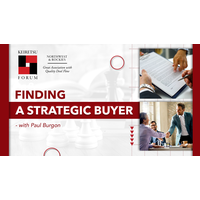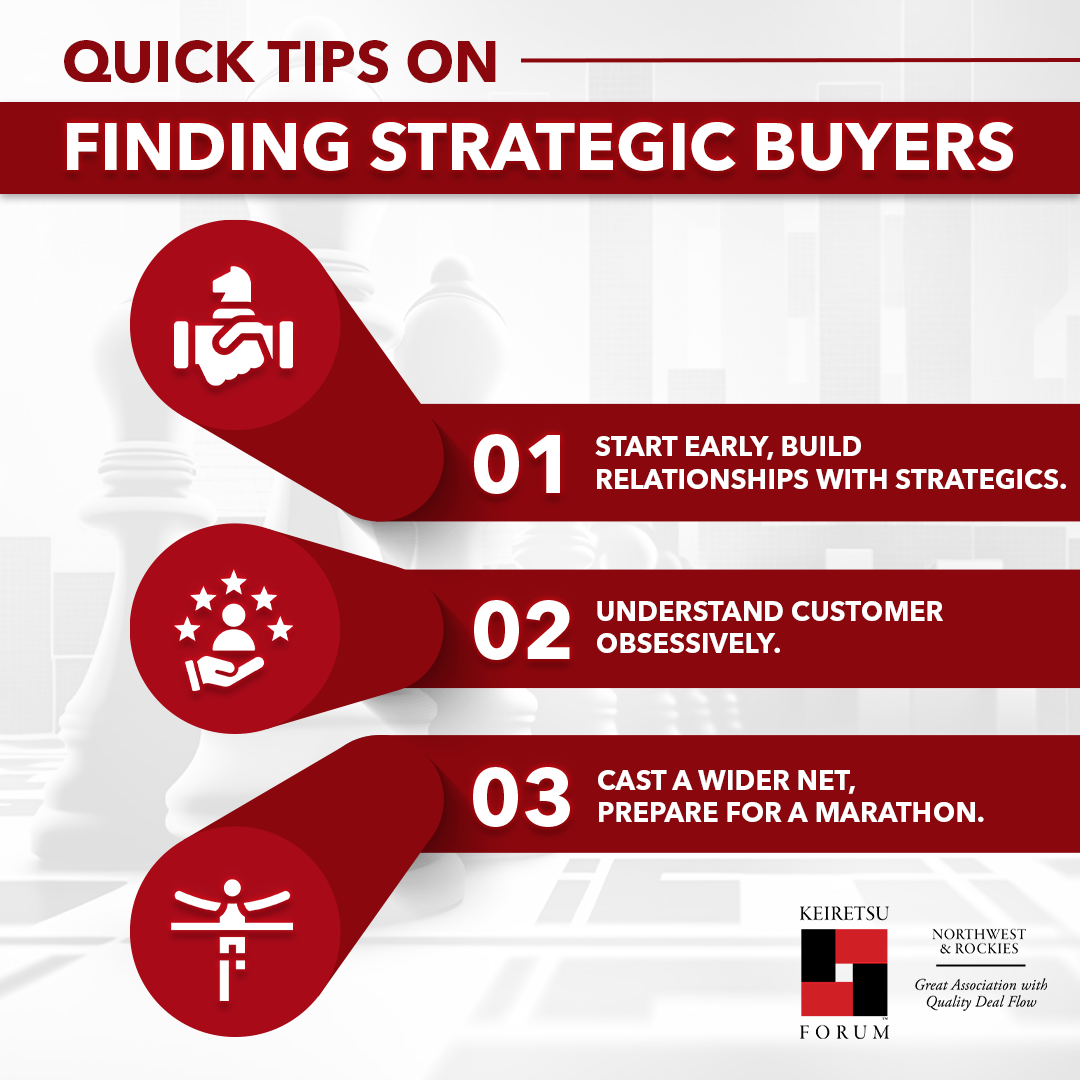
An exit is a way for entrepreneurs and investors to harvest what they have sowed. It is the all-important goal looming on the horizon. Stories of grand acquisitions like Instagram and Whole Foods are now firmly established in funding folklore and serve as beacons for the industry. However, the path toward an exit strategy is fraught with unknowns – it demands careful planning and initiative. Paul Burgon has led and completed over 100 transactions worth $3 billion. As an M&A expert with decades of know-how, he spoke to us about finding a strategic buyer and crafting deal terms that work.
Seeking Relationships Early
Paul’s first tip is to be the early bird. The process should begin 18 to 24 months before a planned exit. He advises against relying solely on investment bankers to attract buyers. Instead, one should actively seek ways to cooperate and build relationships directly with strategics. Even dinners or ballgames could lay the foundation for future collaboration. One should also be patient in the relationship-building process. Avoid approaching a strategic buyer at a conference with a proposition out of the blue. Instead, take the time to nurture the relationship and find common ground.
Looking beyond existing players in the market is key. This means identifying potential buyers even if they aren't in your vertical yet. To offer a high-value proposition, anticipate the strategic buyer's roadmap. As Paul says, it’s important to build relationships first. Next comes anticipating where the buyer may be headed from a technology and services evolution perspective and offering the strategic a high-value proposition based on it. Some strategists may be transparent about what they expect while others may not be. Engage in open conversation, make suggestions, and demonstrate where you can bring additional value. To do this well, understanding the customer (obsessively) is vital.
Making it Happen
“When it's time to hire an investment banker, make sure you do your due diligence on them. Make sure that the investment banker gives you a lot of detail in how they know potential buyers,” Paul says. Before selling, you must smooth over any concerns the buyer may have as well – like resolving open litigation, addressing management gaps, and renegotiating expiring contracts. An organized data room and a well-prepared company contribute not only to a smooth sale process but also to a favorable impression. A proactive approach safeguards your valuation from uncertainties. Hiring a good lawyer and investment banker is essential. A premium may have to be paid but the right professionals can save you from being taken for a ride.
"Be flexible. Don't exclude buyers due to an artificial short auction timeline." Paul also advises caution against artificially rigid deadlines, urging sellers to remain open-minded. Banks may create a competitive situation but 'exclusivity' should be given as late as possible. Sophisticated buyers may demand exclusivity upfront, but try not to yield leverage early. Also, be prepared for the time it will take. Mergers and acquisitions are a lot like marathons. The business should be able to operate in autopilot mode, allowing the management team to focus on the strategic sale process without being bogged down by day-to-day operational urgencies.
When the Deal Goes Down
Exclusivity and purchase agreements are pivotal parts of a strategic sale. Relying solely on the offered price to eliminate potential buyers is inadvisable. The terms of the purchase agreement can be just as, if not more, critical than the price. Saving time is essential. It means understanding each position on the purchase agreement. It also means avoiding the back-and-forth lawyers engage in while exchanging markups on the agreements. Instead, all relevant parties must gather in a room, hash out the details, and ensure that the principals and lawyers are there. If takes a day, take the day out. A healthy negotiation leads to a successful sale.
A poor valuation can often be a cause of disappointment for companies. Sometimes bankers oversell you or due diligence issues arise (such as expiring contracts, poor management presentations, or open litigation). Paul advises understanding the factors behind a disappointing valuation and exploring creative ways to structure around these challenges. When facing hurdles like open litigation, expiring contracts, or other risk factors, structure the deal better. Implement escrows, contingencies, or contingent purchase prices to mitigate risks and enhance the overall deal value. Putting the sale on hold to address and fix these issues is not ideal. However, sometimes, it is a last resort. Buyers are averse to risks that could jeopardize their performance. Sellers can address these concerns early.
As Paul adds, “...the more you take off the table, the higher price you'll get. It's a direct correlation. I can't emphasize that enough. Companies with strong forecasts, with very little risk in the forecast, are always the ones that get the premium valuation.”
Terms of Trade
When it comes to structuring a deal, the choice between asset and stock deals comes into play too. Sellers typically prefer selling stock as it comes with tax benefits and reduced liabilities. While this is the preferred route, there may be cases where offering assets and liabilities might be beneficial – particularly in addressing buyer concerns and optimizing pricing based on tax considerations. Finally, Paul emphasizes the importance of using post-closing covenants in the deal terms to protect sellers. These agreements serve as safeguards, preventing closures or layoffs post-sale. Buyers may not favor such arrangements, but sellers can still negotiate them, extending up to two years in rare cases, depending on the synergies and the buyer's objectives. In essence, finding a strategic buyer is arduous work, much like a grueling marathon on unknown terrain. But with certain boxes ticked – like building relationships, identifying buyers early, anticipating partnerships, hiring experts, and showing flexibility and commitment on deal terms, the marathon can lead to glory.
About the Speaker
Paul Burgon, General Partner at Exit Ventures, is an operations and investment professional who has invested over $3 billion in more than 100 companies at high rates of return. He has spent his career in mergers and acquisitions, public and private investments, and managing small companies. Paul balances strategic analysis and strategy development, and creating and implementing processes that map to company strategy and team leadership. Paul worked as a Director and Manager of Corporate Development at Danaher Corporation, where he helped create the Danaher Acquisition System, which was named one of the most successful in the country by Institutional Investor magazine.
Watch his full keynote on Keiretsu Forum TV: https://keiretsuforum.tv/attracting-a-strategic-buyer-and-negotiating-sale/


